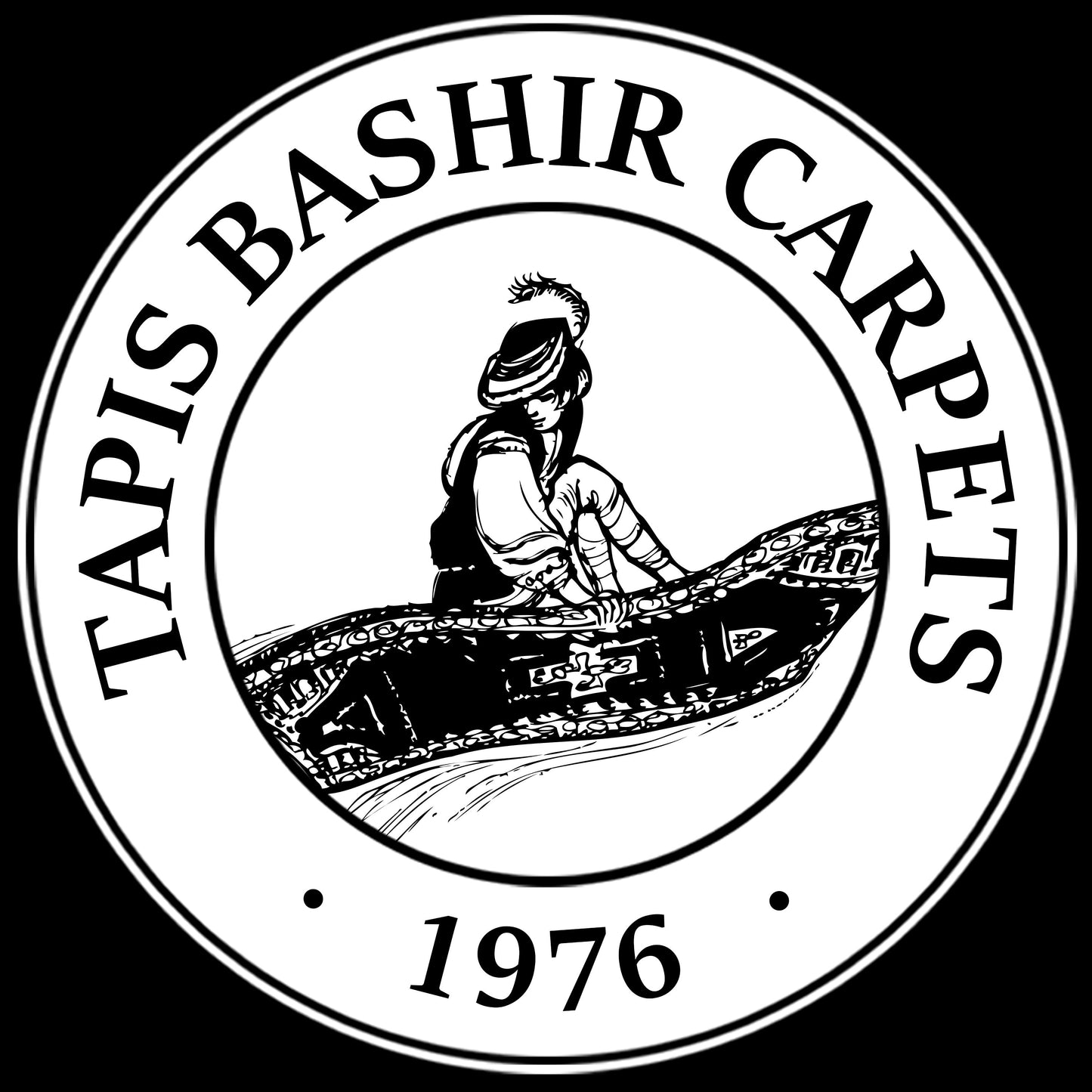Amritsar Carpet 12' x 9'1"
Overview
Materials & Craftsmanship:
This fine, diligently hand-knotted area rug contains a perfect blend of 80% pure silk and 20% pure wool. Persian & Oriental rugs made from a high percentage of silk are intricate and are often the most valuable of all handmade carpets. The silk fibers in this piece create a beautiful sheen throughout the field and borders, providing an ultra luxurious feel. The use of silk ensures a precise rendering of the decorative design patterns since strong silk fibers permit skilled weavers to weave more knots per square inch (KPSI) than those of wool carpets. A typical Persian or Oriental rug made from wool might have between 100 and 300 KPSI - a typical 80% silk rug contains between 200 to 500 KPSI. As a result, weaving the rug will require roughly three times the amount of work, and this is one of the main reasons that silk rugs cost two to three times more than wool rugs. The detailing of this particular piece also contains wool, which increases its durability.
A Brief History of Mughal Carpets
 Carpet weaving was brought to India by the great Mughal Emperor Akbar in the 16th century and are known as Mughal carpets (or Moghul/Mogul carpets). It is said that when Babur came to India, he was disappointed by lack of luxuries there. He missed the luxuries of Persia, which included the Persian carpet. Akbar laid the foundation of carpet weaving tradition in India, in 1520 AD, when he brought some carpet weavers from Persia, at his palace in Agra. With their support he established carpet weavings centers at Agra, Delhi and Lahore to facilitate production of Persian styled carpets, which were inspired by designs from the Persian cities of Kirman, Kashan, Isfahan and Herat.
Carpet weaving was brought to India by the great Mughal Emperor Akbar in the 16th century and are known as Mughal carpets (or Moghul/Mogul carpets). It is said that when Babur came to India, he was disappointed by lack of luxuries there. He missed the luxuries of Persia, which included the Persian carpet. Akbar laid the foundation of carpet weaving tradition in India, in 1520 AD, when he brought some carpet weavers from Persia, at his palace in Agra. With their support he established carpet weavings centers at Agra, Delhi and Lahore to facilitate production of Persian styled carpets, which were inspired by designs from the Persian cities of Kirman, Kashan, Isfahan and Herat.
Indian empire flourished in northern India and a part of its southern region from 1526 to 1857. It came to an end, when its last emperor, Muhammad Bahadur Shah fled into exile from the English to Burma. The Mughal Empire was ruled by six emperors: Babur (1526-1530), Humayun (1530-1555), Akbar (1556-1605), Jahangir (1605-1627), Shah Jahan (1628-1658) and Aurangzeb (1658-1707). The shah Akbar was particularly fond of art, including that of fine carpet weaving. During the construction of the city Fatehpur Sikri, Shah Akbar organized numerous art workshops. His craftsmen adopted Persian techniques and designs to produce fine carpets for their Mughal lord.
Mughal carpets were as intricate as their miniatures and often depicted court life, animals and floral decorations. Mughal carpets were brightly coloured and the hand knotted silk carpets had 4224 knots per square inch. Some of the most exclusive carpets were created during the Mughal reign for the Mughal emperors and their courts, each carpet unlike the other but infused with a common magic of colours and design.
Sources and inspiration: Bérinstain, Valérie, et al. L'art du tapis dans le monde (The art of carpets in the world). Paris: Mengès, 1996. Print.; Jerrehian Jr., Aram K.A. Oriental Rug Primer. Philadelphia: Running Press, 1980. Print.; Herbert, Janice Summers. Oriental Rugs, New York: Macmillan, 1982. Print.; Hackmack, Adolf. Chinese Carpets and Rugs, Rutland and Tokyo: Tuttle, 1980. Print. ; De Moubray, Amicia, and David Black. Carpets for the home, London: Laurence King Publishing, 1999. Print.; Jacobsen, Charles. Oriental Rugs A Complete Guide, Rutland and Tokyo: Tuttle, 1962. Print.; Bashir, S. (n.d.). Personal interview.; Web site sources and dates of consultation vary (to be confirmed). Without prejudice to official usage.



 Runner Rugs
Runner Rugs 2x3 Area Rugs
2x3 Area Rugs 3x5 Area Rugs
3x5 Area Rugs 4x6 Area Rugs
4x6 Area Rugs 5x7 Area Rugs
5x7 Area Rugs 6x9 Area Rugs
6x9 Area Rugs 8x10 Area Rugs
8x10 Area Rugs 9x12 Area Rugs
9x12 Area Rugs 10x14 Area Rugs
10x14 Area Rugs Round Rugs
Round Rugs Bath Mats
Bath Mats Doormats
Doormats 12x15 Area Rugs
12x15 Area Rugs




















